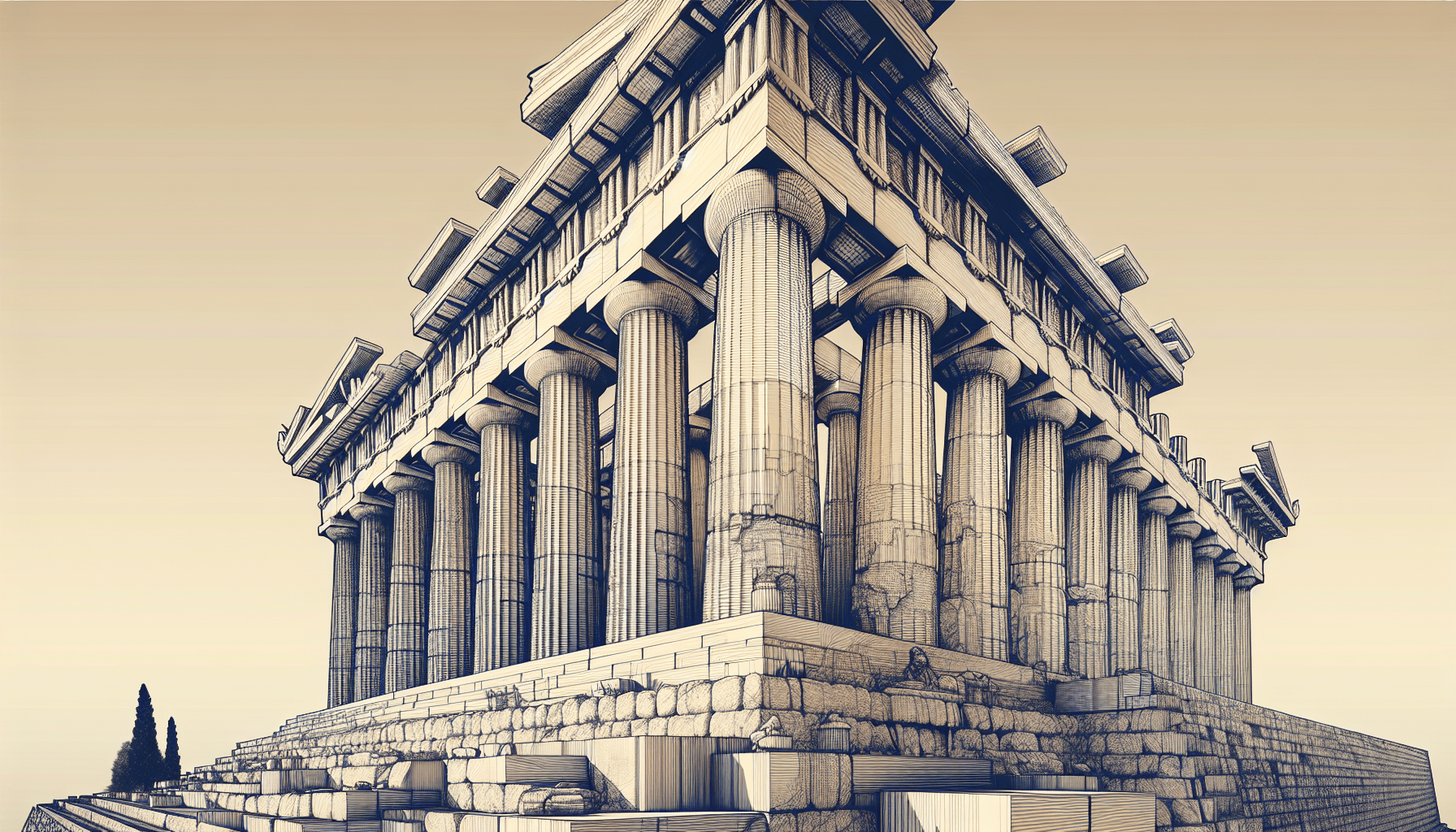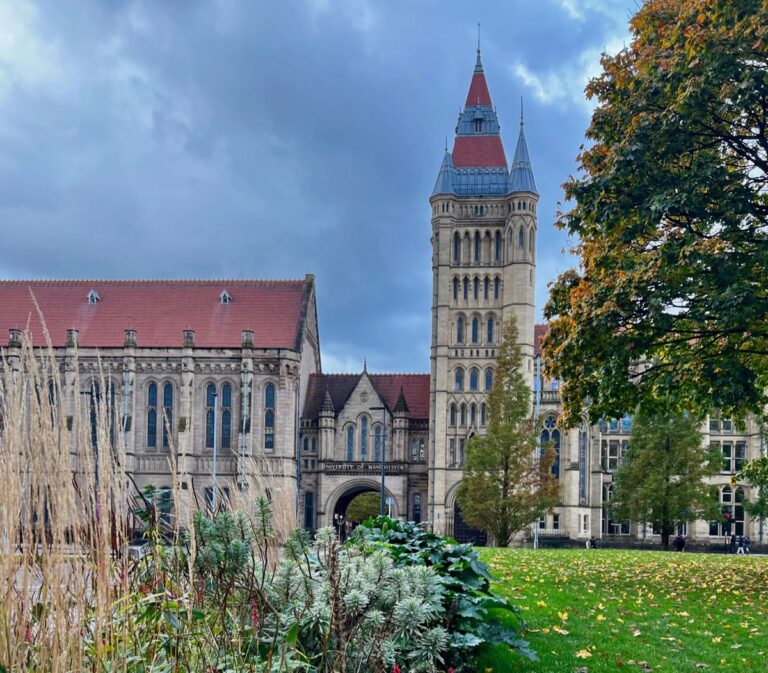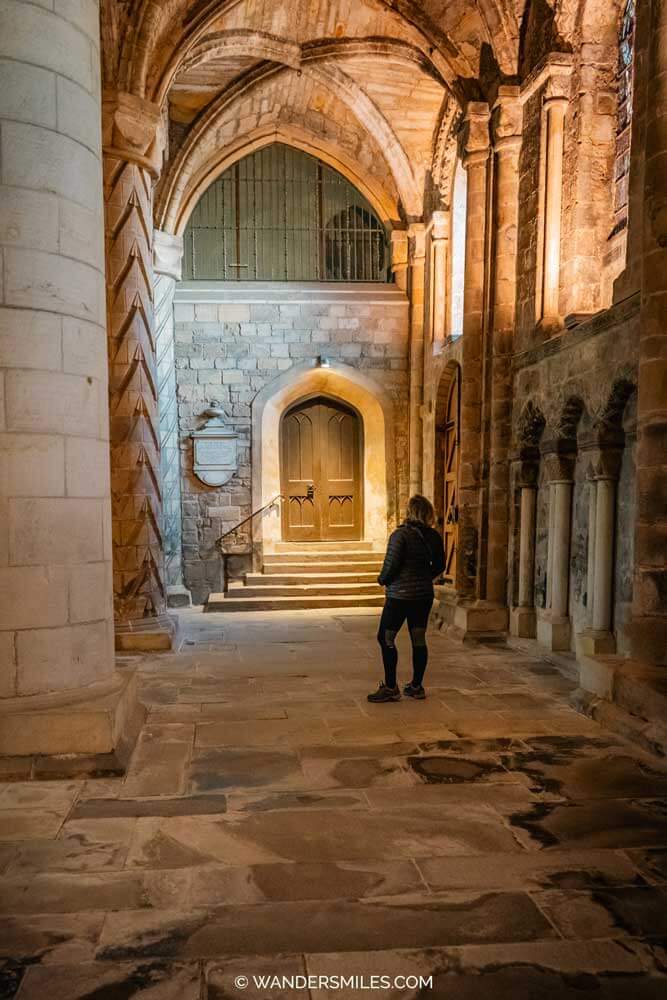Veken 8 Set Packing Cubes for Travel Essentials, Suitcase Organizer Bags Set for Luggage, Road Trip Travel Accessories in 4 Sizes (Extra Large, Large, Medium, Small), Black
$19.99 (as of April 24, 2025 06:56 GMT +00:00 - More info)Imagine stepping back in time and immersing yourself in the wonders of ancient Greece. Picture yourself standing atop the iconic Acropolis in Athens, taking in breathtaking vistas of the city below. This article explores the rich history and architectural marvels of the Acropolis, offering a unique glimpse into one of the most significant historical sites in the world. From the majestic Parthenon to the awe-inspiring Temple of Athena Nike, this captivating journey will transport you to a time of gods and legends. Join us as we invite you to embark on an unforgettable visit to the Acropolis in Athens, where history comes alive.
Getting to the Acropolis
Transportation options
When planning a visit to the Acropolis in Athens, there are various transportation options available to make your journey convenient and hassle-free. One of the most popular means of transportation is by using the city’s efficient and well-connected public transportation system. You can easily reach the Acropolis by taking the metro, bus, or tram.
The nearest metro station to the Acropolis is the Acropolis Metro Station, which is located on the red line (Line 2) of the Athens Metro. From there, it is just a short walk to the entrance of the Acropolis. If you prefer to take the bus, several bus lines operate in the area, providing easy access to the site. Additionally, the tram also runs nearby, offering another transportation option.
For those who prefer more convenience and flexibility, hiring a taxi or using ride-sharing services like Uber or Lyft are also viable options. Taxis are widely available throughout the city and can be hailed or booked through taxi apps. However, keep in mind that traffic in Athens can be congested, so allow extra time for your journey if you choose this mode of transportation.
Location and directions
The Acropolis, a UNESCO World Heritage Site, is situated on a rocky hill in the center of Athens. Its commanding position on the Acropolis Hill provides breathtaking views of the city and its surroundings. To get to the Acropolis, you can follow the signs or use a navigation app to guide you.
The main entrance to the Acropolis is located on Dionysiou Areopagitou Street, a pedestrian street that leads up to the hill. This street is lined with shops, cafes, and restaurants, making it a pleasant stroll before reaching the ancient site. As you walk along Dionysiou Areopagitou Street, you will see signs directing you to the entrance of the Acropolis.
If you prefer to drive, there are parking facilities available near the Acropolis, but it is important to note that parking spaces can be limited, especially during peak tourist seasons. It is advisable to arrive early or consider using public transportation to avoid any parking-related inconveniences.
History of the Acropolis
Ancient significance
The Acropolis holds immense historical and cultural significance as it is a testament to the rich and ancient civilization of Athens. Dating back to the 5th century BCE, the Acropolis was a sacred site dedicated to the worship of the gods and the center of Athenian religious life. The ancient Greeks considered the Acropolis to be the heart of their city-state and a symbol of their power and prosperity.
Construction and architecture
The construction of the Acropolis began during the Golden Age of Athens under the leadership of Pericles, a prominent statesman. The most famous buildings on the Acropolis were built during this period, showcasing the architectural brilliance and engineering expertise of the ancient Greeks.
The main attraction of the Acropolis is the Parthenon, a temple dedicated to the goddess Athena, the patron deity of Athens. Built entirely of marble, the Parthenon is an architectural marvel and a masterpiece of classical Greek architecture. Its intricate design, including its iconic columns and sculptural friezes, reflects the meticulous craftsmanship of the ancient Greeks.
In addition to the Parthenon, other notable structures on the Acropolis include the Erechtheion, a temple dedicated to several gods and goddesses, and the Temple of Athena Nike, a small temple dedicated to the goddess of victory. These structures exemplify the elegance and grandeur of ancient Greek architecture and provide insights into the religious and cultural practices of the time.
Exploring the Acropolis
Entrance fees and tickets
To enter the Acropolis, visitors are required to purchase tickets, which grant access to the main attractions on the site. The ticket price includes entrance to the Acropolis itself, as well as other nearby archaeological sites such as the Ancient Agora and the Roman Agora. It is worth noting that ticket prices may vary depending on the season and any ongoing promotions.
To avoid long queues and ensure a smooth visit, it is advisable to purchase tickets in advance, either online or at designated ticket offices. This will save you time and allow you to make the most of your visit without the need to wait in line.
Tourist facilities and amenities
The Acropolis offers various facilities and amenities to enhance the visitor experience. There are information boards and signs throughout the site, providing historical and cultural information about the different structures and their significance. Additionally, there are restrooms and drinking water fountains available for visitors to refresh themselves during their exploration of the Acropolis.
To further enhance your understanding of the site, audio guides and guided tours are available for hire. These resources provide in-depth insights into the history, architecture, and mythology associated with the Acropolis. They are particularly useful for those who want to delve deeper into the significance and stories behind the ancient ruins.
Main Attractions at the Acropolis
The Parthenon
Undoubtedly, the most iconic and renowned structure on the Acropolis is the Parthenon. This majestic temple, dedicated to Athena, the goddess of wisdom and warfare, is considered the pinnacle of ancient Greek architecture. The Parthenon’s Doric columns, beautiful marble sculptures, and intricate friezes showcase the exquisite craftsmanship and artistic mastery of the ancient Greeks.
Visitors to the Acropolis can marvel at the grandeur of the Parthenon and admire its architectural details. Although the temple has undergone various restoration projects over the years, it still retains its awe-inspiring beauty and stands as a testament to the ancient Greek civilization.
The Erechtheion
Another notable structure on the Acropolis is the Erechtheion, a temple dedicated to several gods and mythical figures. The most striking feature of the Erechtheion is its famous Porch of the Maidens, which consists of six female figures serving as columns. These graceful and intricately carved Caryatids are a prime example of ancient Greek sculptural art.
The Erechtheion is also associated with various mythological stories, including the contest between Athena and Poseidon for the patronage of Athens. Exploring this temple allows visitors to immerse themselves in the rich mythological and cultural heritage of ancient Greece.
The Temple of Athena Nike
Located on the southwestern bastion of the Acropolis is the Temple of Athena Nike, a small but architecturally significant structure. This temple is dedicated to Athena Nike, the goddess of victory, and is an excellent example of classical Greek Ionic architecture.
The Temple of Athena Nike is known for its delicate proportions, ornate frieze, and intricate marble carvings. It served as both a place of worship and a symbol of the city’s military triumphs. Visiting the Temple of Athena Nike provides a glimpse into the military and religious significance the ancient Greeks associated with Athena and victory.
Important Tips for Visiting
Best time to visit
To make the most of your visit to the Acropolis, it is advisable to plan your trip during the quieter periods of the day. Early morning or late afternoon visits tend to be less crowded, allowing you to explore the site at a more relaxed pace and appreciate its beauty without the distraction of large tourist groups.
Additionally, visiting the Acropolis during weekdays is generally less crowded compared to weekends. If possible, try to avoid public holidays or special events when the site tends to attract a higher number of visitors.
Dress code and etiquette
When visiting the Acropolis, it is important to respect the site’s historical and cultural significance by adhering to appropriate dress codes and etiquette. As a sign of respect, it is recommended to dress modestly, covering the shoulders and knees. This is particularly important when visiting religious structures such as the Parthenon and the Erechtheion.
Furthermore, it is essential to be mindful of the ancient ruins and not to touch or climb on them. These structures are fragile and have already withstood the test of time. By treating them with care, you contribute to their preservation for future generations.
Safety precautions
While visiting the Acropolis, it is crucial to prioritize your safety and well-being. The terrain around the Acropolis can be uneven and may require some climbing and walking up steep steps. It is advisable to wear comfortable and sturdy shoes to navigate the site with ease.
Additionally, it is essential to stay hydrated, especially during the hot summer months when temperatures can be high. Carry a bottle of water with you and take breaks to rest and hydrate as needed.
Lastly, it is advisable to be aware of your surroundings and keep your belongings secure. The Acropolis attracts a large number of tourists, making it a target for pickpockets. Keep your valuables close to you and be vigilant in crowded areas.
Recommended Guided Tours
Benefits of guided tours
Joining a guided tour can greatly enhance your visit to the Acropolis by providing valuable insights and context to the ancient site. Knowledgeable guides can share historical and mythological anecdotes, allowing you to gain a deeper understanding of the significance and stories associated with the Acropolis.
Guided tours also offer the convenience of detailed itineraries and planned routes, ensuring that you cover all the main attractions and important points of interest. This can be particularly beneficial if you have limited time or want to maximize your visit by seeing the highlights of the Acropolis.
Options for guided tours
There are numerous guided tours available for visitors to choose from when exploring the Acropolis. These tours cater to various interests, preferences, and budgets, allowing you to find the one that best suits your needs.
Some guided tours focus primarily on the architectural and historical aspects of the Acropolis, providing in-depth explanations of the different structures and their significance. Others may delve into the mythology and religious practices associated with the site, offering a more immersive and cultural experience.
Additionally, there are specialized tours available that combine a visit to the Acropolis with other nearby attractions, such as the Plaka neighborhood or the Acropolis Museum. These combination tours provide a comprehensive overview of Athens’ rich history and cultural heritage.
Nearby Attractions
Plaka neighborhood
Located at the foot of the Acropolis, the Plaka neighborhood is a must-visit for anyone exploring the Acropolis. This historic district is known for its charming, narrow streets and traditional architecture. Strolling through Plaka feels like stepping back in time, with its neoclassical buildings, quaint shops, and picturesque tavernas.
Plaka is also home to many cafes and restaurants, making it the perfect place to take a break and enjoy a traditional Greek meal. Its proximity to the Acropolis and other archaeological sites also makes it an ideal base for exploring the ancient wonders of Athens.
Ancient Agora
Another significant archaeological site near the Acropolis is the Ancient Agora. This ancient marketplace was the center of social, political, and commercial life in ancient Athens. Walking through the ruins of the Agora allows visitors to experience the hustle and bustle of ancient Greek society and provides insights into the daily lives of its inhabitants.
The site features various well-preserved structures, including the Stoa of Attalos, a reconstructed ancient shopping arcade, and the Temple of Hephaestus, one of the best-preserved temples in Greece. Exploring the Ancient Agora offers a fascinating glimpse into the economic, political, and cultural aspects of ancient Athens.
Acropolis Museum
For those interested in delving deeper into the history and artifacts associated with the Acropolis, a visit to the Acropolis Museum is highly recommended. Located just a short distance from the ancient site, the museum houses an impressive collection of artifacts that were found during archaeological excavations.
The Acropolis Museum showcases a wide range of ancient sculptures, statues, and architectural fragments, providing visitors with a comprehensive understanding of the artistic and cultural achievements of ancient Greece. It also features a glass floor that allows visitors to view the ongoing excavations beneath the museum.
Local Cuisine and Dining
Traditional Greek dishes
A visit to Athens would not be complete without indulging in the delicious and flavorful traditional cuisine. Greek cuisine is renowned for its use of fresh ingredients, healthy cooking techniques, and vibrant flavors.
Some must-try dishes when visiting the Acropolis include moussaka, a layered casserole made with eggplant, minced meat, and béchamel sauce, and souvlaki, skewered grilled meat commonly served with pita bread and tzatziki sauce. Other popular Greek dishes include dolmades (stuffed vine leaves), spanakopita (spinach and feta cheese pie), and baklava (a sweet pastry made with layers of filo, nuts, and honey).
Popular restaurants near the Acropolis
When it comes to dining near the Acropolis, there are numerous options available to cater to every taste and preference. Many restaurants in the Plaka neighborhood, as well as those situated on the pedestrian streets leading to the Acropolis, offer traditional Greek cuisine in a charming and picturesque setting.
Tavernas and ouzerias are popular choices, as they serve authentic Greek dishes in a relaxed and casual atmosphere. These establishments often feature live music and dancing, providing a lively and festive dining experience.
For those looking for a more refined dining experience, there are also upscale restaurants near the Acropolis that offer gourmet Greek cuisine and beautiful views of the ancient site. These establishments combine exquisite flavors with elegant presentations, creating a truly memorable dining experience.
Accommodation Options
Hotels near the Acropolis
If you wish to stay in close proximity to the Acropolis, there are several hotels conveniently located within walking distance of the ancient site. These hotels offer a range of options to suit different budgets and preferences, from boutique hotels to luxury resorts.
Staying near the Acropolis provides the advantage of easy access to the site, allowing you to explore it at your leisure and potentially enjoy stunning views of the illuminated Acropolis at night. Additionally, being centrally located enables you to explore other attractions in Athens easily.
Alternative accommodation options
For those who prefer a more unique and immersive experience, there are alternative accommodation options available near the Acropolis. Renting an apartment or staying in a guesthouse allows you to live like a local and experience the vibrant neighborhoods of Athens.
There are also options for homestays and bed and breakfasts, where you can interact with the locals and gain insights into Greek culture and hospitality. These alternative accommodation options provide a more intimate and personalized experience, allowing you to create lasting memories of your visit to Athens.
Souvenirs and Shopping
Authentic Greek souvenirs
No visit to the Acropolis would be complete without taking home a piece of Greek history and culture. Athens offers a wide variety of authentic Greek souvenirs that make for perfect mementos of your visit.
Popular souvenirs include olive oil products, such as soaps and cosmetics, along with local delicacies like honey, herbs, and spices. Traditional handicrafts, such as ceramics, jewelry, and textiles, are also excellent choices to bring back home. Look out for items featuring Greek motifs, such as the Parthenon or ancient Greek symbols, to add a touch of Greek heritage to your collection.
Gift shops and markets near the Acropolis
There are numerous gift shops and markets near the Acropolis where you can find a wide selection of souvenirs. Dionysiou Areopagitou Street, the main pedestrian street leading to the Acropolis, is lined with shops offering various souvenirs, including clothing, accessories, and trinkets.
Additionally, the Plaka neighborhood is home to many charming small shops and boutiques that specialize in traditional Greek products, such as handmade ceramics, artistic jewelry, and local artwork. Exploring these shops allows you to find unique and authentic souvenirs while immersing yourself in the vibrant atmosphere of Athens.
In conclusion, a visit to the Acropolis in Athens is a journey through time, offering a glimpse into the ancient Greek civilization and its architectural achievements. From the iconic Parthenon to the intricate Temple of Athena Nike, the Acropolis is a treasure trove of historical and cultural wonders. By planning your visit carefully, respecting the site’s significance, and immersing yourself in Greece’s culinary and cultural offerings, you can make your trip to the Acropolis an unforgettable experience.






